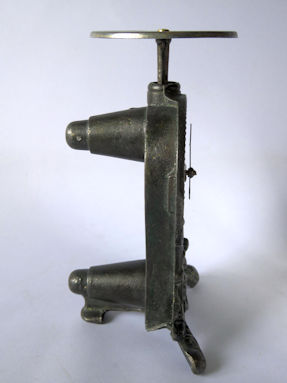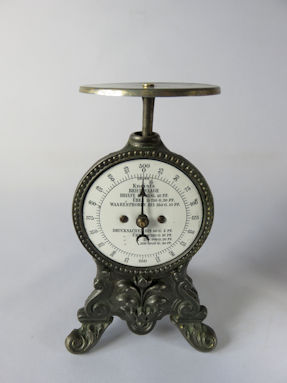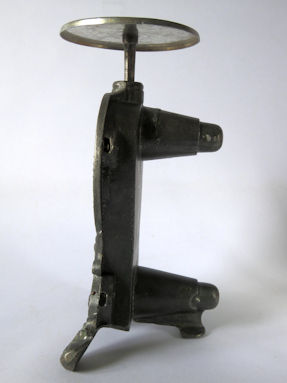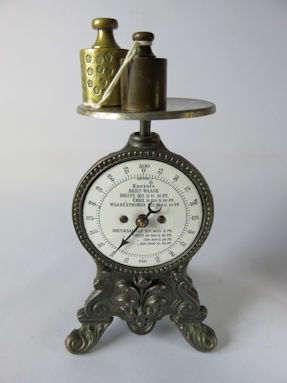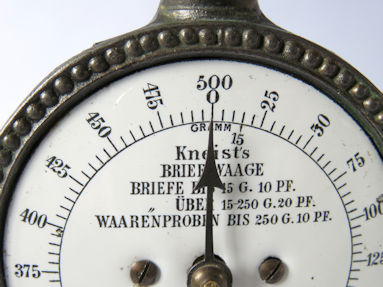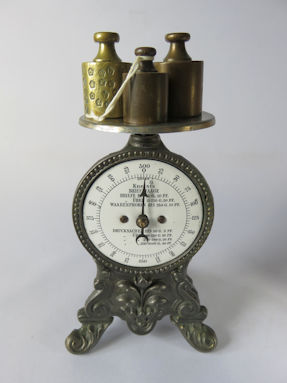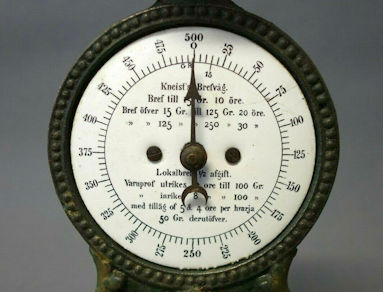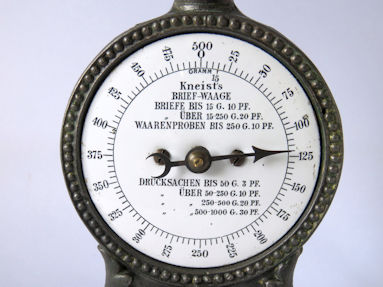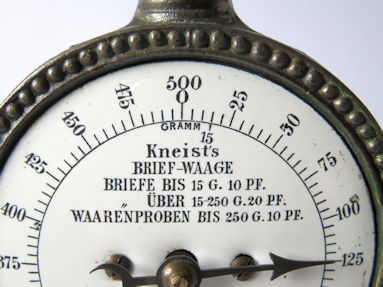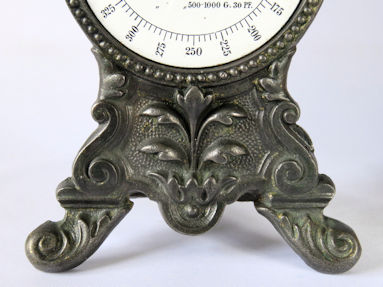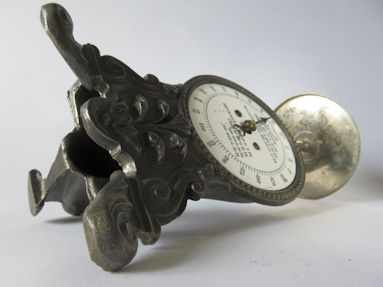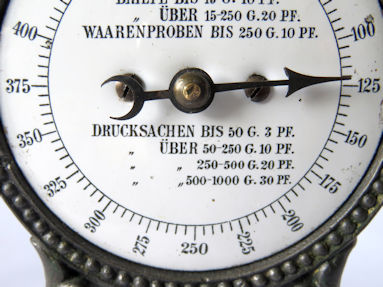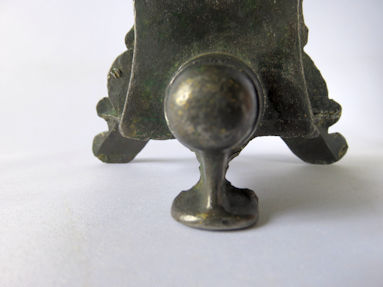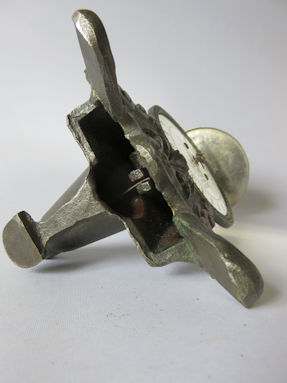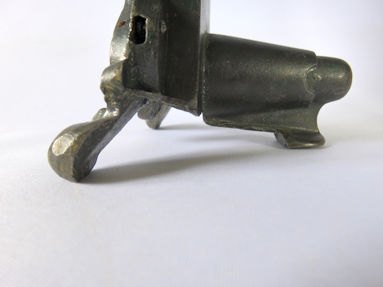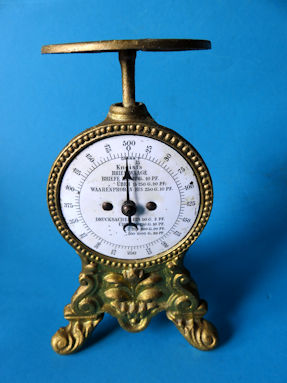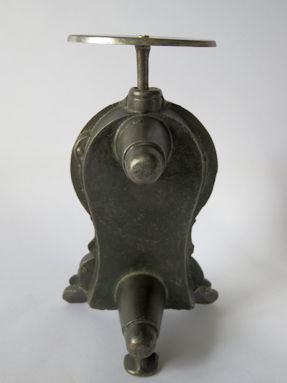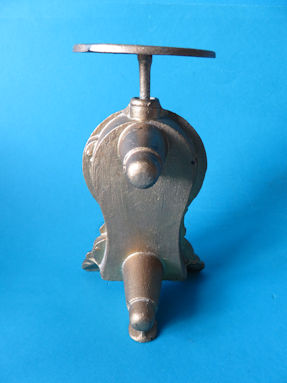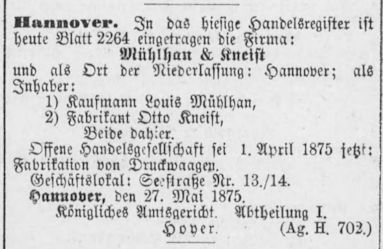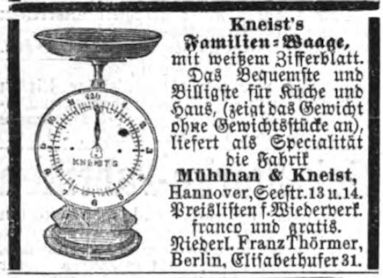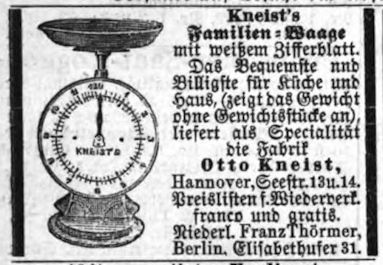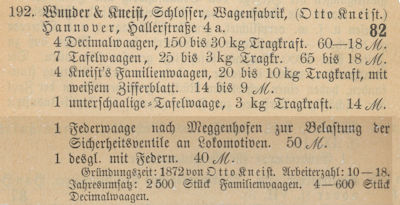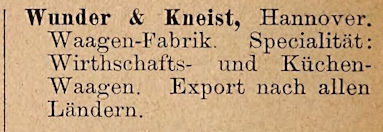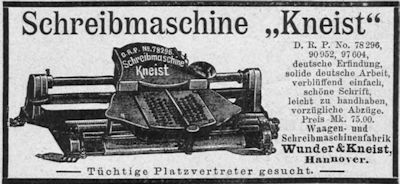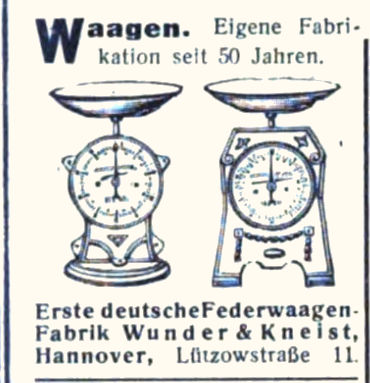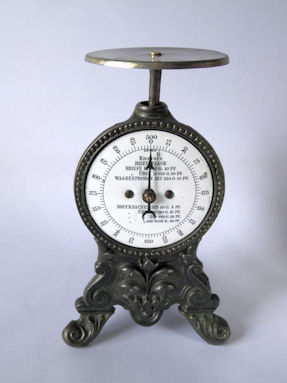
Kneist's letter scale up to 500 grams
This letter scale bears the name Kneist's Brief-Waage on the dial. It also shows German postal rates for letters (Briefe) up to 15 grams 10 Pfennig, and up to 250 grams 20 Pf.; for samples (Waarenproben) up to 250 grams 10 Pf.; and for printed matter (Drucksachen) up to 50 grams 3 Pf., up to 250 grams 10 Pf., up to 500 grams 20 Pf. and up to 1000 grams 30 Pf. These printed matter rates were valid in the period from 1 January 1875 to 1 June 1890, this is the shortest period of validity compared to that of the letters from 1 January 1875 to 1 April 1900 and that of the samples from 1 January 1875 to 1 October 1918.
Otto Kneist started making household and table scales in 1872. On April 1, 1875, together with the merchant Louis Mühlhan, he started the open trading company Mühlhan & Kneist for the production of Druckwaagen. Very quickly, on July 6, 1875, all rights were transferred to Otto Kneist, and on July 1, 1875, the open trading company was closed down again. It is still unclear to me when exactly the company Wunder & Kneist was founded. From advertisements it seems to be possible to deduce that this collaboration already existed in 1872. There have been various factory names over the years: Wonder & Kneist Wagenfabrik in 1878; erste deutsche Wirtschafts-Waagen-Fabrik Wunder & Kneist in 1891; Waagen- und Schreibmaschinenfabrik Wunder & Kneist in 1898; Schreibmaschinen- und erste deutsche Wirtschafts-Waagen-Fabrik Wunder & Kneist in 1898; Schreibmaschinenfabrik Wunder & Kneist in 1901; erste deutsche Federwaagenfabrik in 1922; Wirtschaftsgerätefabrik Wunder & Kneist in 1927. In the 1920s Wunder & Kneist entered into a partnership with other scale manufacturers and Widewag GmbH (WIertschaftsgemeinschaft DEutscher WAagen- und Gerätefabriken GmbH) was founded, primarily to market their products more efficiently. Wunder & Kneist is said to have existed until 1950.
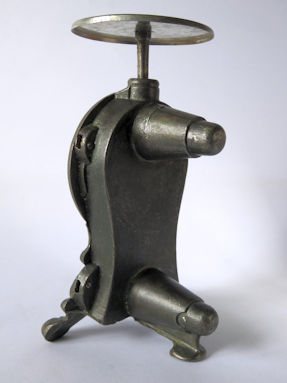
back of the letter scale
